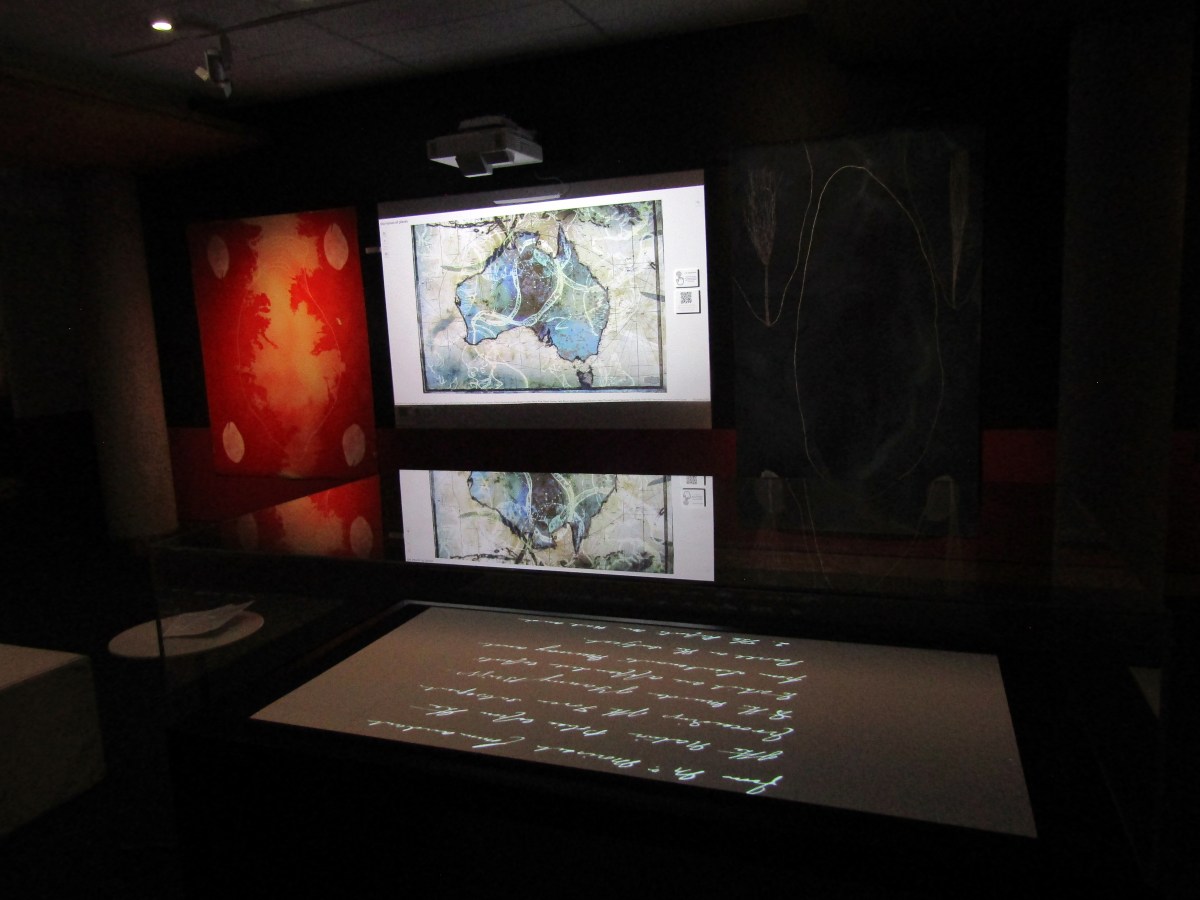This summer, Skeletons, the solo exhibition by First Nations artist Judy Watson at the Queensland State Archives (QSA) may chill some viewers to the bone with its accounts of atrocities imposed upon her people.
The title reflects both the 19th century English idiom of ‘skeletons in the closet’, implying secrecy, and the exportation of the bones of Australia’s First Nations people to the same country during a similar time period. The latter equates to being bereft of brethren, as many First Nations people believe that remains retain the spirits of the deceased. It is with this reverence that Watson and the exhibition’s Wakka Wakka/Kalkadoon curator, Amanda Hayman, interrogate the QSA collection, which houses records dating back to the establishment of the Moreton Bay Penal Settlement in the early 1820s.
Presented are pivotal artworks in Watson’s trajectory, from butcher’s apron series flag #1 and #2 (1994) to the newly commissioned body of evidence (2022). The seductively sheer red muslin of the former entices visitors into the exhibition space. Inscriptions on the flags only become detectable as they draw near, with the first flag expressing the desire of Australian monarchists to conserve their ‘heritage’ by ‘leav[ing] our country as we received it’. Watson interprets this sentiment by embellishing the second flag with the words ‘rape slaughter disposition’.
Whereas the expressed intention behind this exhibition was to make the QSA more inviting to First Nations people, it equally serves to unsettle their Second Nations* counterparts by immersing them in a grief and dispossession that is ever-present. This conflation of the past and a perceivable future is investigated in body of evidence. Consisting of handwritten letters from the 1800s, which are scanned and projected into a display case, the artwork breathes new life into the term ‘digital artefact’. The orally narrated text documents inhumane acts, such as poisoning, and captures the dehumanising attitudes of their authors, through their use of derogatory terms.
The artworks, which chronologically fall between two installations investigating the injustices in living memory of many viewers, include a complicated fall: palm island lament (2007) and from dusk til dawn, 5 Brisbane shields (2003). The latter recounts the invocation of Boundary Street in Brisbane’s West End as a literal geographic perimeter, across which (during specified times) First Nations people were prohibited to cross up until the 1960s.
Like the butcher’s apron series – the title of which is a euphemism for the Union Jack – many of the earlier artworks are not only powerful in the testimonies they present, but also the poise in which they are aesthetically delivered. Watson is recognised for her dexterous application of pigments, which at times engages a process of drawing in the negative. The subsequent compositions have an ethereal luminosity. Although vibrant in colour and form, the surfaces also have a skin-like subtlety in tone.
The exhibition charts a triumphant transition from analogue to post-digital over the past decade. Her signature tactility has been masterfully translated from canvas to single-channel HD video and an interactive map. She creates texture in media notorious for their sterility through her considered layering of material. Evident throughout is her predisposition for primary sources and her commitment to activating these archival documents. The resulting artwork is affecting and accessible storytelling.
Read: Exhibition review: Yeahnahnesia, Art Gallery of Western Australia
Watson gives material and digital forms to the perspectives of her people, which were previously underserved in government archives. The exhibition could be cathartic for some First Nations visitors. It may also provide an evocative education to others, disruptive of the privileged perspective many Second Nations people presently share. The single channel HD video water under the bridge tumamun (2020) epitomises the way many issues raised in the other artworks are being addressed.
The inequity that remains in ‘the bones’ of governance in Queensland is laid bare.
* The term ‘Second Nations’ is in use in Canada where ‘First Nations’ originates. It describes diasporic communities including European.
Skeletons, Judy Watson
Queensland State Archives
Skeletons will be on display until 11 February 2023.





